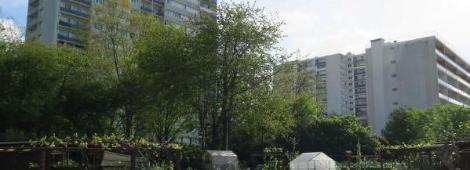A Better Understanding of Nature in Priority Urban Neighbourhoods (QPV)
January 2024
Agence nationale de la cohésion des territoires (ANCT)
Given that nature in the inner city is a little-known subject, the national guidelines developed by the Fabrique Prospective aim to bring together the players involved in these two issues (associations, the State, local authorities) and the public policies they implement. They aim to raise awareness among these players, improve knowledge of nature in the inner city and support appropriate projects.
To download : fp_qpv_nature_complet_29_janvier_0.pdf (11 MiB)

Paying particular attention to disadvantaged neighbourhoods when drawing up biodiversity atlases An atlas of communal biodiversity (ABC) is a shared diagnosis of biodiversity issues in a given area. It involves all the players in a municipality (elected representatives, citizens, associations, businesses, etc.) in preserving the natural heritage. More than just an inventory of habitats and species, an ABC is an information and decision-making tool for local authorities, making it easier to integrate biodiversity issues into their planning and management processes. An ABC gives rise to three types of output:
1. field naturalist inventories, during which observation and monitoring data on species and/or habitats are produced;
2. Mapping of biodiversity issues, which can be incorporated into land-use planning and development projects;
3. a plan of concrete actions in favour of biodiversity, and any other publications, reports or appendices relating to the implementation of the ABC and the resulting prospects.
Every year, the OFB provides financial support to municipalities and inter-municipalities wishing to set up an ABC, up to a grant of €250,000 and 80% of eligible expenditure, and provides them with a methodological guide. To date, more than 3,200 municipalities are involved in an ABC. The 2024 funding campaign is now part of the Green Fund.
During the intersite seminars, participants in the Fabrique Prospective emphasised the value of ABCs in improving knowledge of biodiversity in local areas. To ensure that the QPVs are properly taken into account, municipalities and inter-municipalities that embark on the preparation of an ABC should ensure that they involve, alongside the other participants, urban policy professionals (agents from State services and inter-municipalities, associations, etc.).
Using participatory science to collect data and mobilise residents of the QPVs
Participatory sciences are defined as forms of scientific knowledge production in which non-professional scientists, whether individuals or groups, participate actively and deliberately. In particular, they have developed in the natural sciences to collect data (mapping, census, counting, etc.).
These sciences provide a better understanding of the distribution and evolution of populations of living species, the reasons for their decline or expansion, the indicators that can be used to highlight these phenomena and, last but not least, how to raise awareness of nature among local residents. They are aimed at everyone and can mobilise local residents in a variety of ways.
For the participants in the Fabrique Prospective, participatory science was seen as a way of renewing the methods of participation used by residents of disadvantaged neighbourhoods and encouraging the collection of naturalistic data on the neighbourhoods. With this in mind, municipalities and inter-municipal bodies need to get in touch with players who have mastered the methods of participatory science, such as the Muséum national d’histoire naturelle, the OFB or the centres permanents d’initiatives pour l’environnement (CPIE), in order to benefit from their expertise and develop communication aimed at associations and residents of the QPVs.